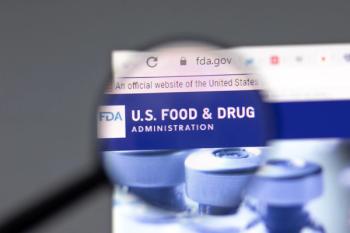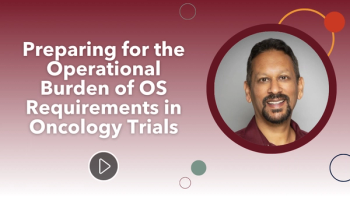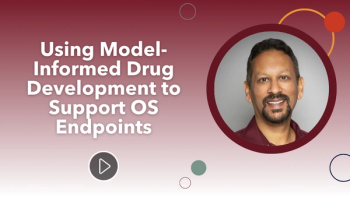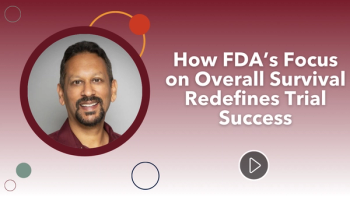
Applied Clinical Trials Supplements
- Supplements-04-01-2010
- Volume 0
- Issue 0
Using Compliance Data for Strategic Advantage
Help desk centers offer sponsors the chance to mine valuable PV data.
Part of an array of steadily growing pressures that face the industry, compliance requirements continue to increase in importance in pharmaceutical operations. Regulatory oversight and enforcement actions on a variety of compliance issues, including conflicts of interest, rising product prices, product safety, distributor agreements, and direct-to-consumer advertising are increasing, and this trend shows little sign of abating. At the same time, concerns about drug safety are driving rigorous regulatory scrutiny, especially during the approval process, as recent news reports indicate.1 Compounding these challenges, the industry is also dealing with pipeline issues; although R&D has increased, the number of new products submitted to the FDA has been dropping since the late 1990s.2
Instead of planning only for regulatory required compliance reporting, this new situation presents companies with an opportunity to use knowledge gained through compliance across the pre- and postmarket spectrum. One particular area, pharmacovigilance (PV), can use increasing compliance requirements related to safety and adverse event reporting to redefine traditional safety monitoring methods and to make compliance part of a comprehensive business strategy—not only to make drugs safer, but also to add value to pharmaceutical product portfolio management and help capture the full clinical and economic value messages of a product. This article discusses how companies, from a strategic viewpoint, can use data generated from compliance requirements as an opportunity to transform PV and enhance their ability to incorporate economic and clinical value considerations into a product's lifecycle.
Compliance can drive the bus
Quite often compliance to regulatory requirements has been viewed as a nuisance and burden.3 Instead of viewing new compliance requirements as simply adding to reporting burdens, however, a well formulated strategic approach can focus on the intent of the rules, and use them to transform and improve an organization.
For many companies there are immediate steps PV groups can take to go beyond basic compliance. For example, companies routinely collect data on calls received from patients or physicians with questions about a product, and are required to maintain a database of spontaneous adverse event reports on marketed products. Compliance requires companies to collect and report this information, but a larger opportunity exists here to enhance the use of data collected and redefine the use of existing data.
Besides fulfilling reporting requirements, the company typically determines whether calls were answered in a timely manner or whether sufficient staffing was available to handle the volume of calls. Unfortunately, these administrative efforts do not take advantage of the opportunity presented by the requirement to maintain a call center and database of adverse events.
The point is that this data by itself is not necessarily strategic, but it can be used in a strategic manner, and this situation illustrates how to use a compliance requirement to greater strategic advantage. For example, companies may use call center data for trend analysis for incremental improvements, but we are proposing using the data as an element in strategic portfolio management, helping to guide companies' investments in new technology. This orientation uses existing and new compliance requirements to go beyond minimal collection or reporting obligations.
This information can be used to help develop a strategic product improvement focus by creating a clearer picture of what is happening with patients, health care providers, and the drug, and by identifying trends and opportunities in the market. The process can be formalized so that PV data is a critical piece of the data used in strategic market planning. PV can partner with R&D and strategic marketing to analyze the issues that arise frequently and use the information proactively. For example, PV could identify and track the issues raised in questions the call center receives, including those questions that do not involve reportable issues.
PV may need to assist by identifying the type of data needed for analysis in order for a call center to improve their intake process to make sure as much information as possible is collected. Besides identifying signals, PV will be able to contribute to labeling and provide additional risk-benefit information to help doctors and patients with decisions to use products. Also the information can be used to develop or expand educational material for physicians and patients to address specific issues. These efforts are aimed at reducing negative outcomes, avoiding misuse of the drug, and improving patient compliance.
Improved methods of evaluating drugs also can help in providing marketing information on differentiation, for example, by identifying safety advantages and/or better risk information for physicians and patients, and improving safety as a result.4
Compliance and value
By understanding issues patients face, PV can also help expand market knowledge in a strategic manner by using this information as insightful market research data. R&D and strategic marketing can be an internal customer of PV data. With this strategic perspective the data may point to issues that require further examination, or identify pipeline feedback and trends that point to unmet market needs—and new product opportunities, a critical need for many companies. In this way, PV can help transform the business by using this data to drive product innovation and education.
Call centers provide an opportunity to gain true market insight, and the data PV collects can be used in ways beyond compliance driven AE reporting and signal detection. It should be used as market research data. Product complaints and patient compliance issues can provide insight into a target patient population and their future needs. This data on a target group might suggest that a different delivery method could improve compliance (e.g., from IV administered drug to oral, or providing a method to enable home vs. doctor office administration), as well as help with the development of specific, tailored information for a target group.
Understanding patient perceptions, especially regarding risk/benefit, could indicate the type of product with a higher likelihood of doctor and patient acceptance and identify niche therapy opportunities for R&D. This data can provide great customer insights if viewed as market research.
Expanding the use of data acquired in a pharma company's contact center to strategically expand market knowledge illustrates one way a PV group can go beyond basic compliance reporting. Compliance can act as a stepping stone by using this data gathering requirement to leverage the information to identify unmet needs in the market and new product opportunities.
These efforts are not just part of integrating safety data, but help address larger issues facing the industry. They are steps toward transforming the business at a time when the industry faces rising product development costs and greater pricing sensitivity. The number of new drugs approved by the FDA is on a downward trend despite steadily increasing R&D expenditures.5 At the same time payors are increasing their pressure on companies to incorporate economic and clinical value considerations into a product's lifecycle from development through marketing. PV is in a position to leverage the use of this frontline data to support other parts of the business in their planning processes.
The larger transformative potential in broadening PV's involvement is that it can help provide a better understanding of the needs of all stakeholders, from patients to physicians to payors. By using resources a company already has in place, such as call center data, PV can act strategically to better identify unmet medical needs and determine potential areas of therapeutic focus that can help drive disciplined portfolio investment decisions.
Conclusion
Much of PV's focus is on creating a structured, integrated approach to risk management and incremental improvements to existing products. This step is important, but too narrow a view might prevent pharmacovigilance from developing economic and clinical value market insights that have transformative potential. Ultimately, clinical and economic value underlies compliance issues and drug safety—and reflects the true strategic imperative in the pharma industry. Compliance from this viewpoint is a tool that can be used to leverage capabilities to create new benefits.
Using data proactively will enable pharmacovigilance to contribute economic and clinical value and significant competitive advantage. Given the compliance demands for improved data collection and analysis and increasing adverse event reporting requirements, this approach provides the framework for ensuring transparent compliance processes and can help transform the business by using data to drive product innovation, patient safety, and education.
Rita E. Numerof, PhD, is President, Stephen Rothenberg, JD, is a Business Analyst, and Jill E. Sackman, DVM, PhD, is a Senior Consultant at Numerof & Associates, Inc., Four CityPlace Drive, Suite 430, St. Louis, MO 63141, email:
References
1. K. Winstein, "Late Drug Approval Linked To Safety Issues," Wall Street Journal D1 (27 March 2008).
2. Food and Drug Administration, CDER Facts and Figures, August 8, 2007. H. Bethan, "2007 FDA drug approvals: a year of flux," Nature Reviews Drug Discovery, 7 (2) 107-109 (February 2008).
3. K. Getz, "Drowning in the Sea of Regulatory Compliance," Applied Clinical Trials, February 2007,
4. S. Gottlieb, "Drug Safety Proposals And The Intrusion Of Federal Regulation Into Patient Freedom And Medical Practice," Health Affairs, 26 (3) 664-677 (2007).
5. Government Accountability Office, New Drug Development: Science, Business, Regulatory, and Intellectual Property Issues Cited as Hampering Drug Development Efforts, p. 4 (GAO, Washington, DC, November 2006).
Articles in this issue
over 15 years ago
What to Examine in the Strategic Partnershipover 15 years ago
Why Emerging Pharmas and CROs Need Each Otherover 15 years ago
Top 5 Partnering Mistakesover 15 years ago
Financial Steps for SitesNewsletter
Stay current in clinical research with Applied Clinical Trials, providing expert insights, regulatory updates, and practical strategies for successful clinical trial design and execution.






.png)



.png)



.png)
.png)
